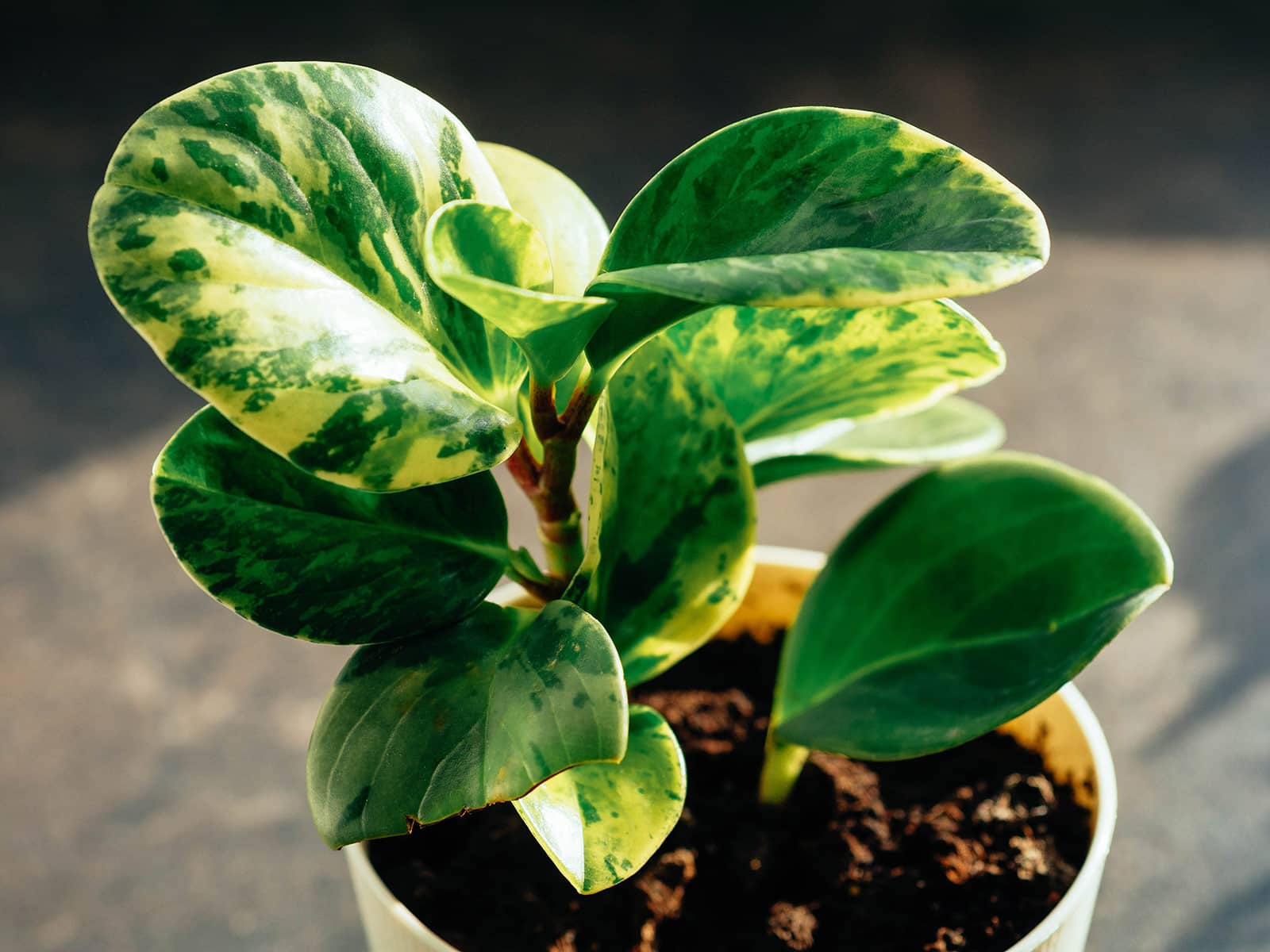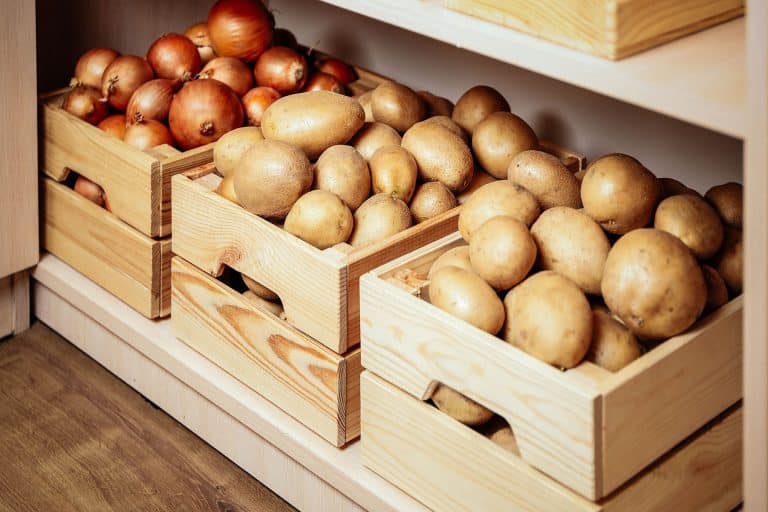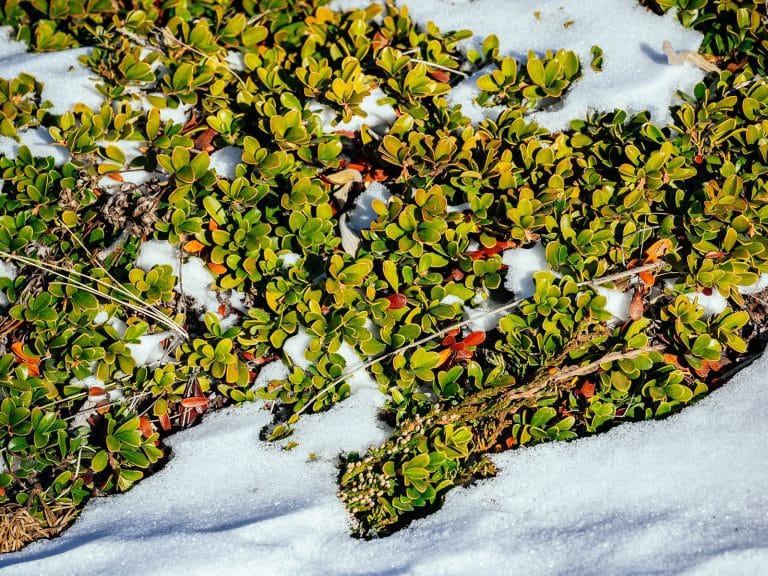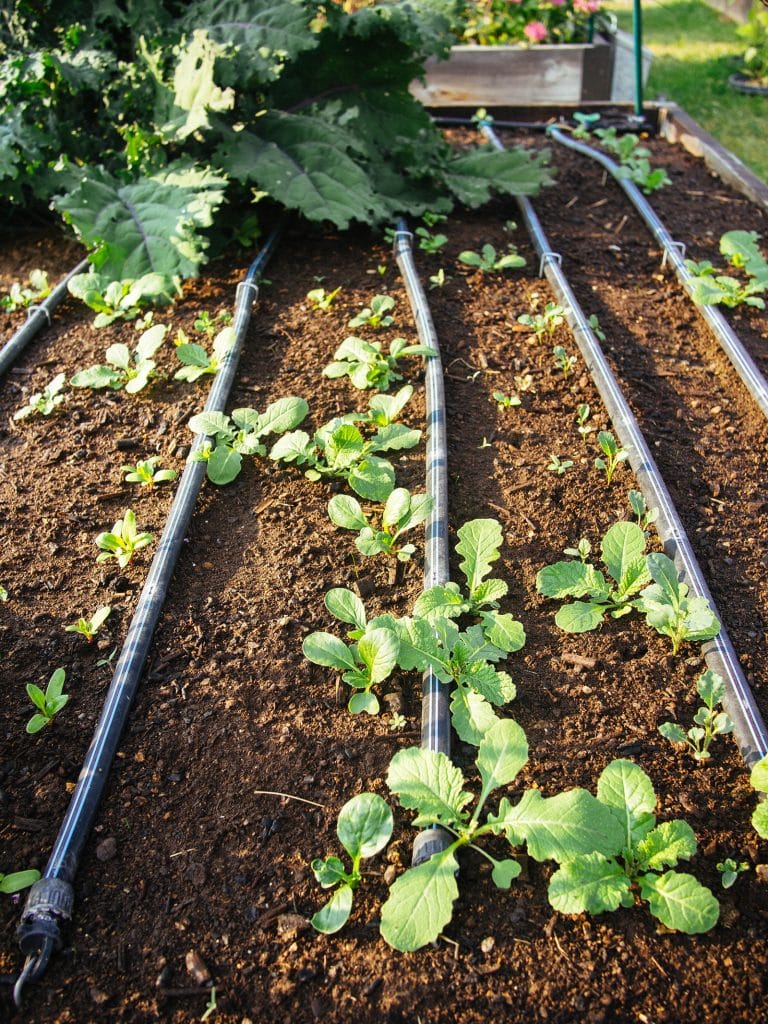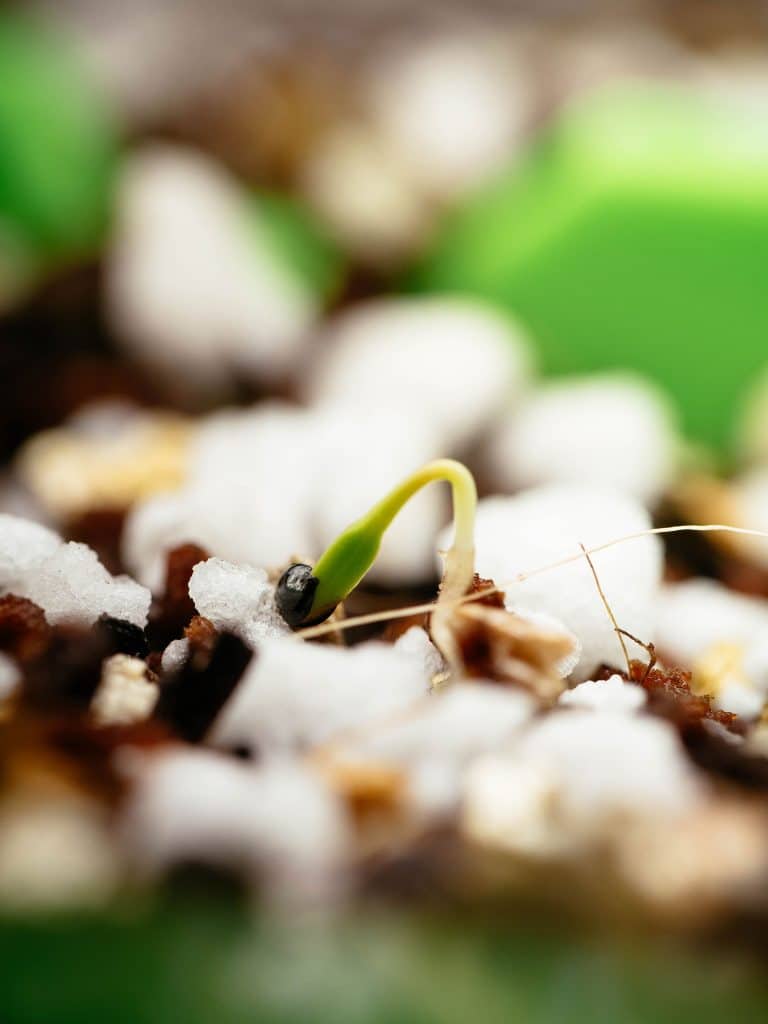If you want a simple yet interesting houseplant that stays small and isn’t too fussy, the genus Peperomia is full of low-maintenance plants that won’t take over your entire windowsill (like the adorable Peperomia prostrata, for one).
This one is another personal favorite: Peperomia obtusifolia, better known as the baby rubber plant for its shiny foliage in shades of deep green or marbled cream.
Here’s everything you need to know about the baby rubber plant and how to make sure your Peperomia obtusifolia thrives in your home.
| Common name(s) | Baby rubber plant, pepper face |
| Scientific name | Peperomia obtusifolia |
| Family | Piperaceae |
| Height & spread | Up to 1 foot tall and wide |
| Light | Bright indirect light |
| Soil type | Well-draining |
| Water | When soil is halfway dry |
Disclosure: If you shop from my article or make a purchase through one of my links, I may receive commissions on some of the products I recommend.

About Peperomia obtusifolia
Description
The first thing you’ll notice about the baby rubber plant is the lovely shininess of its rounded, leathery foliage. Although it does bloom, the rat tail-like flowers aren’t really head-turners. It’s all about the leaves with this one!
Peperomia obtusifolia is a fleshy or waxy plant with upright stems. It stays notably small, usually no more than a foot in height and width, so it’s perfect for small homes and limited windowsill space. Variegated (marbled) versions exist; I’ll get into those below in the section on Peperomia obtusifolia varieties!
Natural habitat
The baby rubber plant is actually a North American native. It’s naturally found in parts of the southern US, especially Florida. In addition to this, it has a wide natural range in Central and South America.
Peperomia obtusifolia likes warm and moist habitats, such as swamps and tropical rainforests. In the wild, it can be found growing not just in the ground, but also often as an epiphyte in taller trees (a trait seen in other epiphytic plants like fishbone cacti, mistletoe cacti, sweetheart Hoyas, and Hindu rope plants).

Peperomia obtusifolia varieties
Long-time houseplant enthusiasts will know how many different varieties of the same plant can exist. Through selective breeding and sometimes hybridization, nurseries can create differently colored and shaped versions (cultivars) of the same plant. These can even be patented!
The largest collection of patented baby rubber plant varieties is probably by a Dutch nursery called Eden Collection. Their ‘Obtipan’® line contains plants like ‘Bohemian Bravour’ (small, red-edged leaves) and ‘Golden Genua’ (cream-edged foliage). ‘Red Canyon’ can be recognized by its reddish stems.
Multicolored varieties of Peperomia obtusifolia are often lumped together under the denomination of “variegata”, but there are actually a bunch of different cultivars:
- Peperomia obtusifolia ‘Marble’: Foliage is a mix of dark green, light green, and cream
- Peperomia obtusifolia ‘Golden Gate’: Similar to Marble, but more golden instead of cream
- Peperomia obtusifolia ‘Lemon Lime’: Lacks the cream or gold, with just light and dark green variegation
- Peperomia obtusifolia ‘Albomarginata’: No light green coloration, just dark green with cream around the edges
Aside from these, there are a few elegant green cultivars:
- Peperomia obtusifolia ‘Jade’: Leaves are extra dark green
- Peperomia obtusifolia ‘Red Edge’: With thin burgundy leaf margins
Where to buy
Baby rubber plants
Did you know?
If you see a beautiful pink-edged variegated baby rubber plant (usually labeled ‘Tricolor’ or ‘Ginny’), that’s a common case of mislabeling! This is actually a close cousin of Peperomia obtusifolia called P. clusiifolia. Luckily, their care is pretty much the same, so you can go ahead and keep reading.
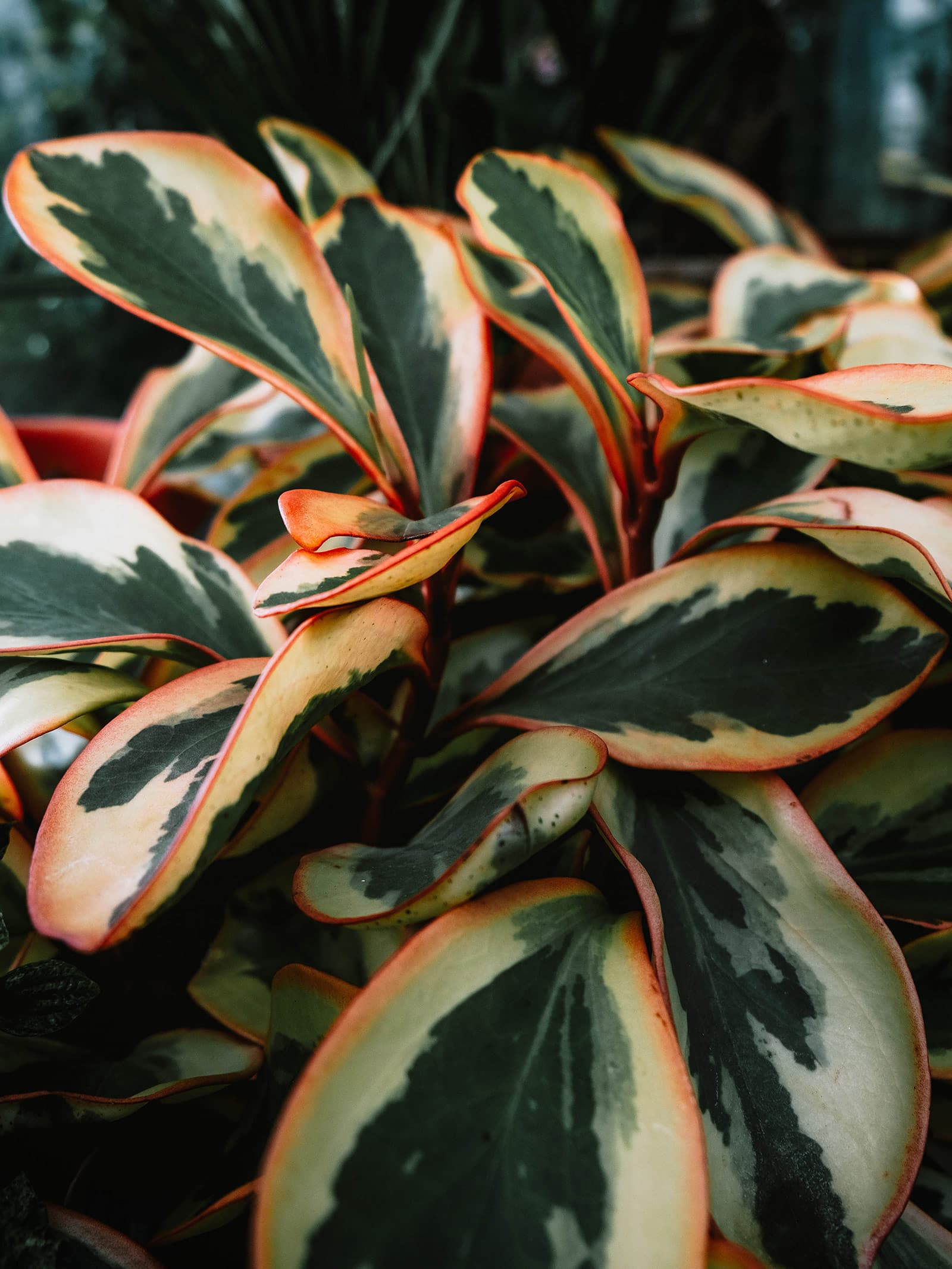
Caring for Peperomia obtusifolia
Light and temperature
In its natural forest habitat, Peperomia obtusifolia forms part of the understory. Here, direct sunlight is largely blocked out by taller trees, which means this plant hasn’t evolved to be very demanding when it comes to light. Still, that doesn’t mean it can be kept in the dark!
For the best results, place your baby rubber plant in front of a window that receives bright but indirect light. If this is not an option, you can also consider using a grow light. Some direct sun is fine, but if your plant gets blasted (like outdoors in summer), it might burn or fade.
Don’t banish your plant to a shaded corner, as nice as it looks there. It’ll etiolate (grow pale and spindly) in search of more light, causing the plant to lose its typical bushy look as the leaves begin to grow further and further apart. Variegated baby rubber plants can even lose their lovely marbled patterns and revert to green.
In terms of temperature, Peperomia obtusifolia is decidedly a tropical. It doesn’t like the cold and will likely stop growing if temps drop below 60°F. Keep yours away from drafty hallways and cold windows; room temperature and above should work well.
Soil and planting
Your Peperomia will thrive in a rich soil type, but it’s important to keep in mind that these plants don’t do well in an overly compact or soggy medium. Excess moisture that can’t drain properly puts your baby rubber plant at risk of root rot!
For a quick solution, you can use houseplant potting soil formulated for succulents and cacti. If you prefer mixing your own, that’s easy too: just combine a high-quality houseplant soil with around 20 percent perlite or fine orchid bark. This will result in a light mixture that drains easily.
Baby rubber plants will grow well in any container type as long as there’s a hole in the bottom. Mature plants tend to look very attractive in a hanging planter, as the relatively heavy leaves can, over time, cause the stems to arch downwards and begin to grow in a more trailing manner.
Recommend products for Peperomia obtusifolia plant care:
- Back to the Roots Organic Succulents & Cacti Mix
- Good Earth Organics Premium Potting Soil
- Perfect Plants Organic Perlite
- Better-Gro Orchid Bark
Water and humidity
Peperomia obtusifolia can be considered a semi-succulent. Because it can store water in its thick leaves quite efficiently, it’s important to avoid overwatering yours. Excess moisture (especially if drainage or light are lacking) can lead not just to root rot, but also to an issue referred to as edema. This involves the cells in the leaves rupturing, which results in ugly brown dotting.
As with other houseplants, I can’t tell you exactly how often you should be watering your Peperomia, as the ideal frequency depends on factors like the season, amount of light, and ambient room temperature. In the cold, dark winter months, for example, our houseplants tend to be much less thirsty.
You can start by watering once or twice a week during summer, and every other week in winter. But really, the best thing is to just regularly stick a finger into your plant’s soil. If it feels dry to around halfway down the planter, you can give it a sip. This way, you get a clearer idea of when watering is needed, helping to avoid issues.
In terms of humidity, baby rubber plants aren’t too finicky, but they can run into trouble if your home is very dry (consistently under 40 percent; you’ll likely notice this affecting your own skin as well). If this is the case, you may want to consider running a humidifier.
Fertilizing
Peperomia plants in general aren’t known for being very quick growers, and the baby rubber plant is no exception. They also don’t tend to develop large root systems. As a result, they’re not heavy feeders, so you won’t have to apply fertilizer weekly or even biweekly.
To still give your Peperomia obtusifolia a little boost during the growing season, you can give it a little plant food with its regular watering around once a month. During winter, when your baby rubber plant likely isn’t growing much, it’s better not to use fertilizer at all.
Recommended fertilizers for Peperomia obtusifolia:
- Elm Dirt Plant Juice Organic Fertilizer
- Houseplant Resource Center Liquid Fertilizer for Houseplants
- Maxsea All-Purpose Seaweed Plant Food
Pruning
Like most houseplants, a Peperomia obtusifolia won’t really need pruning. It’s normal for mature plants to eventually abandon some of their bottom leaves. You can remove these once they’ve gone crispy if they haven’t fallen off by themselves.
If your baby rubber plant has gone a bit stretchy or overly bushy for your taste, you can snip off any stems you don’t like the look of. Don’t throw the clippings away, though—just turn them into new plants! (See my instructions in the section on propagation below.)
Dividing or repotting
Because this isn’t the quickest grower, your Peperomia obtusifolia will usually take two years or more to outgrow its container. If the roots are starting to peep out of the drainage hole or you notice the soil starting to dry very quickly, you’ll know it’s time to divide or repot your plant the upcoming spring.
Dividing a baby rubber plant is a good option if yours has multiple stems and you’d like to have more plants to cheer up your interior. Repotting it as a whole (going up one pot size), on the other hand, is perfect if you like a larger, fuller plant.

Propagating Peperomia obtusifolia
If one baby rubber plant doesn’t quite cut it for you, you’re in luck; like most other members of the genus Peperomia, this species is easy to propagate.
The easiest way to multiply your Peperomia obtusifolia is by taking a stem cutting. Use a pair of clean scissors to remove a piece of stem of at least 2 1/2 inches in length, preferably with some leaves. The ideal would be to make the cut right below an eye, which is a small bump on the stem that leaves or roots can grow from.
You can place the cutting in a glass of water and move it to soil once the roots are at least 2 inches or so long, but it’s also possible to pot it up right away. In the latter case, it helps to dip the cutting in some rooting powder before sticking it in the soil. You can even place the pot and cutting in a translucent plastic bag for the first few weeks, as this will help keep in warmth and humidity.
The cool thing about Peperomias is that stem cuttings aren’t the only way to propagate them. With many of these plants, including P. obtusifolia, you actually only need a single leaf to grow a whole new plant.
If you’d like to try your hand at leaf propagation, just carefully remove a leaf (with stem) from the mother plant and stick it in a small planter with some suitable soil. Keep the medium lightly moist (consider the plastic bag method), and you should hopefully spot a teeny tiny baby plant sprouting from it within a few weeks.
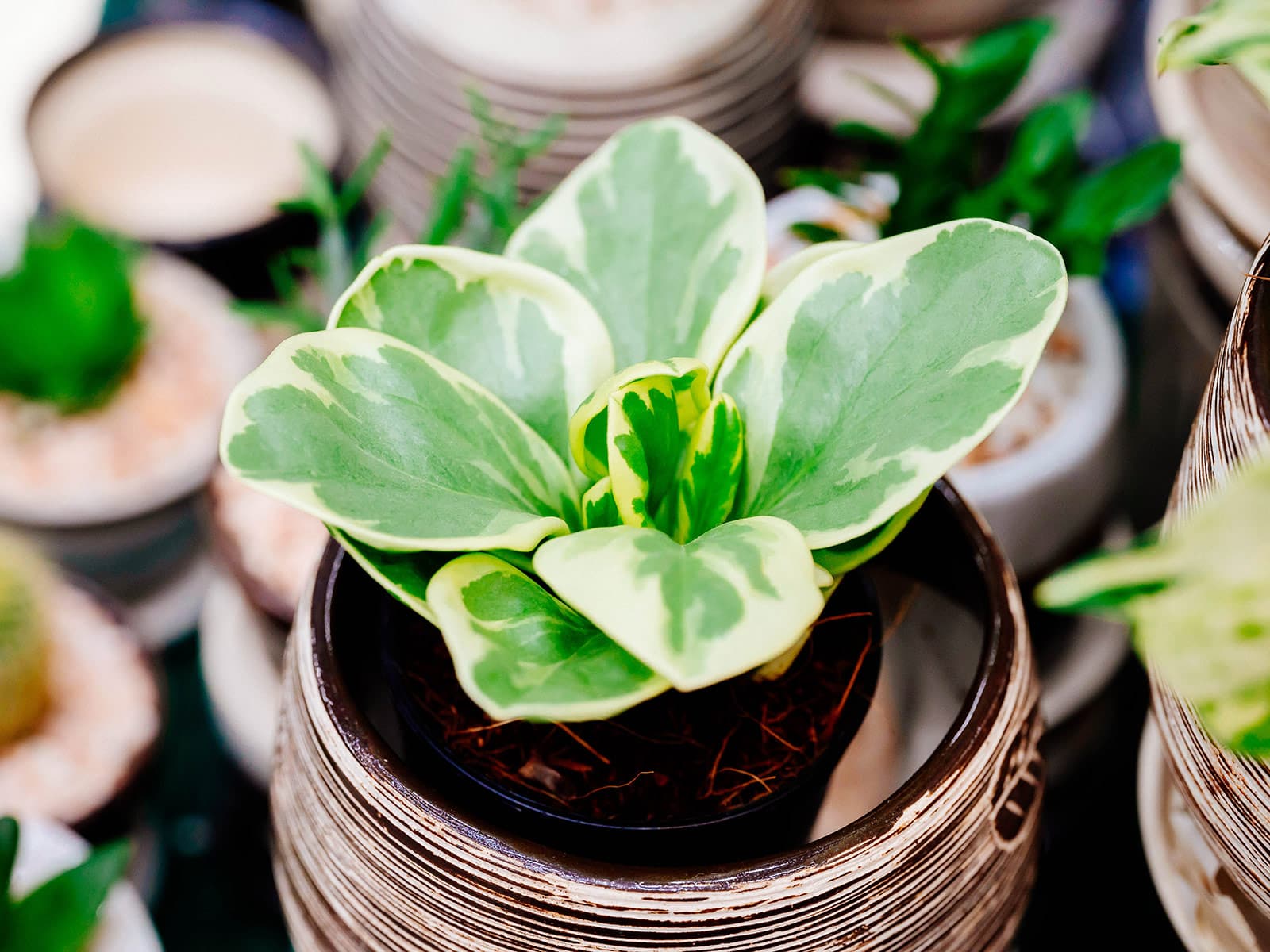
Is Peperomia obtusifolia toxic to cats and dogs?
Nope, none of the houseplants in the genus Peperomia are known to be toxic. No worries if your cat or dog takes a bite from your plant (and the same goes for kids).


